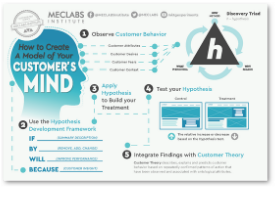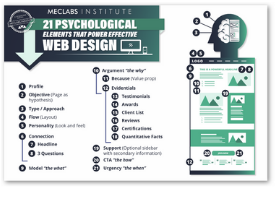Over the past few weeks I have heard the same exact comment from every single B2B marketer I’ve spoken to about what makes the difference in sales in these tough times:
“Get back to every incoming email really, really quickly.”
Not within 24 hours. Not within sometime this business day. Within a handful of minutes. Half an hour max.
The point being to catch that customer or prospect while they are still on their computer, while they are still at their desk, before they get distracted, and most importantly, before your direct competitor (who prospects probably emailed 20 seconds after they emailed you) gets back to them first.
Very often the first company to respond gets the sale.
Which is why I’m bummed by survey results announced by Jupiter this Monday that out of 227 US companies contacted via email, 23% didn’t bother to respond within three days. Three days!
That kind of behavior hurts *all* of us, because it trains people to not expect an answer when they email a company. Do we really
want to train our customers and prospects to not bother to contact us via email? Do we really want to throw away sales?
This week our Tech Editor Alexis Gutzman reports on some more disturbing news for email marketers. Seems that consumers are reporting opt-in lists as s*pam. Her column is below.
Until next week, Anne
P.S. Many readers wrote in about my Blog last week to say, “I wish my NPR station would use the Internet more during fundraising drives.” Here’s a resource you can send your local station manager to in order to encourage that: http://www.webpledgetools.org
P.P.S. You can reach me at anneh@marketingsherpa.com, but if you need help with your subscription or questions about anything in SherpaStore, you’ll get a faster response from our Customer Service Manager Donna Pfledderer at service@sherpastore.com or (919) 975-1705. Thanks!
====
CASE STUDIES
====
#1. How Flexcar Gets a 72% Marketing Email Newsletter Open Rate
If your company operates in multiple locations, or has multiple product lines, or multiple buyer demographics, then you really should be considering publishing several different email newsletters.
But, who has time? Flexcar decided instead to create one ultra-personalized newsletter that adjusts itself to each subscriber. That may sound complicated (and expensive) but it’s really not. Check out this Case Study to learn how you can duplicate their success on a small budget: http://www.consumermarketingbiz.com/sample.cfm?contentID=2192
#2. Five Tactics Briefing.com Uses to Sell Subscriptions to Individual Investors Online
This Case Study has one very big stealable idea for a way to improve your Web site results. Read it and then test it out for yourself.
Most Web site changes lead to incremental growth. You change a bit of copy, or the color of a button, and voila .005% more of your visitors buy something. Which is to be celebrated. But once in a blue moon a single improvement makes a profound difference to he bottom line. Briefing.com found one that meant some visitors were four times more likely to buy. Learn what it was: http://www.contentbiz.com/sample.cfm?contentID=2194
#3. How to Retain Business Clients by Using Regular Emailed Surveys
Almost everyone surveys their customers occasionally to find out how they are doing. Business cleaning company Jani-King is n an incredibly competitive marketplace, so they decided to survey monthly.
How do you get clients to answer a survey that frequently? This Case Study provides great advice. Best bit: Jani-King’s emailed surveys are in the body of the email itself, so recipients don’t have to click over to a Web page to answer them. http://www.b2bmarketingbiz.com/sample.cfm?contentID=2191
====
PRACTICAL KNOW HOW
====
#4. Alexis’ Tech Column: Cloudmark Test Results Disturbing for Permission Emailers
Do you think your email campaigns or newsletters are safe from being filtered into the “junk” folder – or being reported to spam blacklists – because you are a pure-as-the-driven-snow permission marketer? Sorry, Alexis has some bad news for you… http://www.emailsherpa.com/sample.cfm?contentID=2196
#5. Anne’s Marketing Column: How to Sell Your List – Part I
Seems like everyone is trying to make an extra buck these days by renting out their email list. Worldata’s Jay Schwedelson says, “We’ve seen exponential growth of the number of list on the market. 18 months ago there were 3,000-4,000. Now it’s literally close to 20,000.”
But lots of those lists are “garbage” and many are selling for bottom-of-the-barrel pricing. Here’s useful advice on how to put your list on the market the “right” way — so anti-s*pam advocates won’t hate you, and so you actually make a decent profit: http://www.emailsherpa.com/sample.cfm?contentID=2195
#6. How to Get Mentioned in The Marketing Report
Thousands of B2B marketing and sales executives read the print subscription newsletter ‘The Marketing Report’ twice monthly. Want to get your name or story in front of them? Find out how from our interview with Editorial Director Pieter VanBennekom: http://www.marketingfame.com/sample.cfm?contentID=2193
#7. How to Combine Location Videography + Focus Groups: Rubbermaid’s 5 Steps for Market Research
When Rubbermaid’s Commercial Products Division wanted to research new ideas for the restaurant marketplace, they realized focus groups alone wouldn’t do the job. They needed action footage of real kitchens. If you’re involved in location-related market research, check out this interview to get tips on combining video and focus groups: http://www.greatmindsinmarketing.com/sample.cfm?contentID=2190









